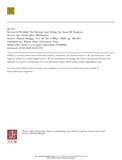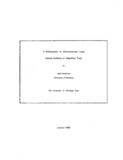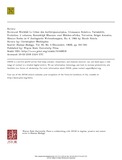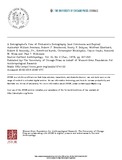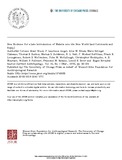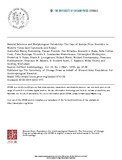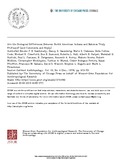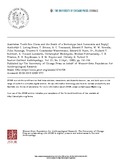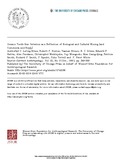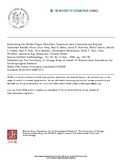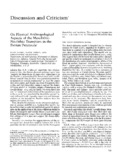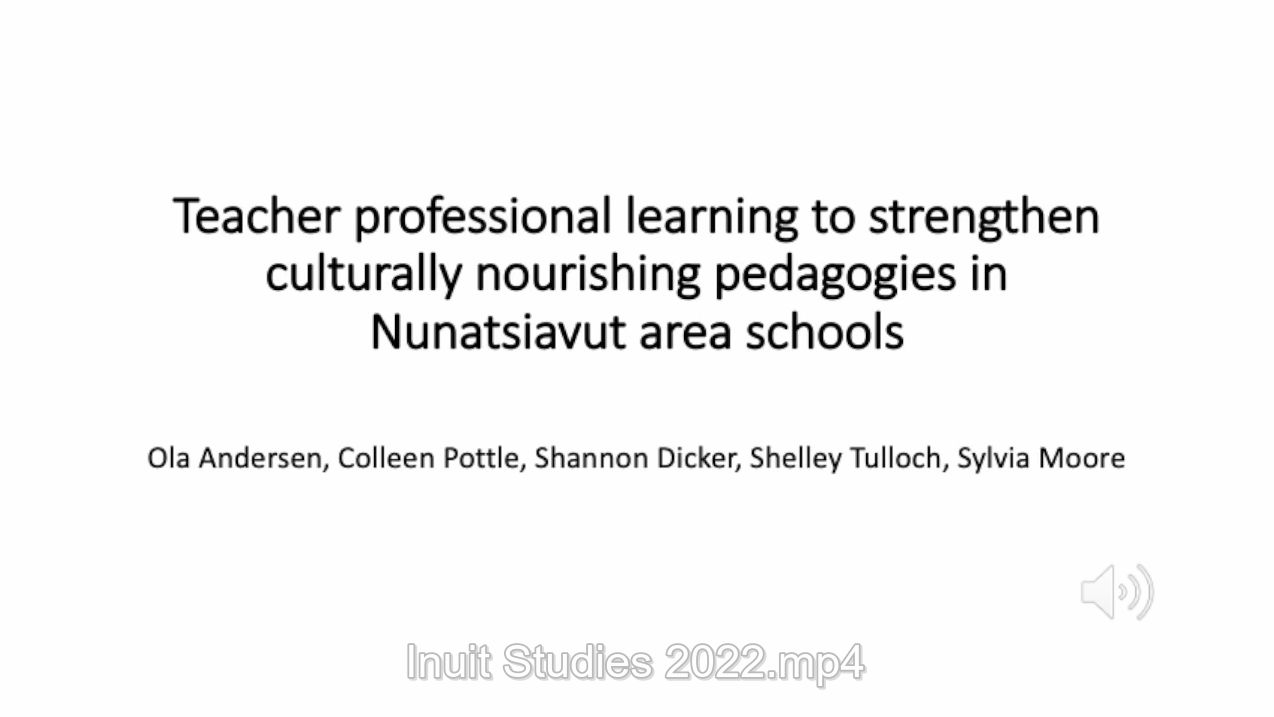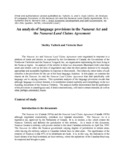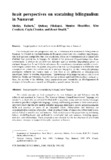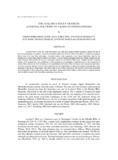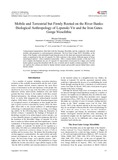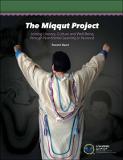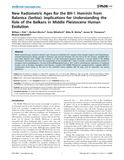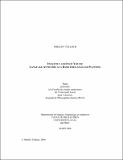Parcourir Department of Anthropology par date de publication
Voici les éléments 1-20 de 38
-
The Bering Land Bridge
(Wayne State University Press, 1967-01-01) -
A bibliography of ethnobotanical usage among cultures of Algonkian type
(The University of Winnipeg Press, 1968-01)The present bibliography of published materials attempts to convey the available data on Native North American cultures of Algonkian type. The search was supported by the Northern Studies Committee of the University of ... -
Le Crâne des Anthropomorphes [Book Review]
(Wayne State University Press, 1968-01-01) -
A Demographer's View of Prehistoric Demography
(The University of Chicago Press, 1975-01-01) -
New Evidence for a Late Introduction of Malaria into the New World
(The University of Chicago Press, 1975-01-01) -
Natural Selection and Morphological Variability: The Case of Europe From Neolithic to Modern Times [Comment]
(The Wenner-Gren Foundation for Anthropological Research, 1978-03) -
Are the Biological Differences Between North American Indians and Eskimos Truly Profound? [Comment]
(The University of Chicago Press, 1978-12-01) -
Australian Tooth-Size Clines and the Death of a Stereotype [Comment]
(The University of Chicago Press, 1980-01-01) -
Oceanic Tooth-Size Variation as a Reflection of Biological and Cultural Mixing
(The University of Chicago Press, 1981-01-01) -
Rethinking the Middle/Upper Paleolithic Transition
(The University of Chicago Press, 1982-01-01) -
Seasonal Variation in Maglemosian Group Size and Structure: A New Model
(The University of Chicago Press, 1987-01-01) -
On Physical Anthropological Aspects of the Mesolithic-Neolithic Transition in the Iberian Peninsula
(Current Anthropology, 1997-01-01) -
Teacher professional learning to strengthen culturally nourishing pedagogies in Nunatsiavut area schools
(2002-06)This presentation on professional learning for culturally nourishing pedagogies in Inuit schools is based on a SSHRC-funded research project which asked, how can collaborative professional learning (PL) foster knowledge ... -
An analysis of language provisions in the Nunavut Act and the Nunavut Land Claims Agreement
(GETIC, Université Laval, 2003)The Nunavut Act and Nunavut Land Claims Agreement were negotiated in response to a plethora of needs and desires, as expressed by the Government of Canada, the Government of the Northwest Territories and the Nunavut Tungavik ... -
Inuit Perspectives on Sustaining Bilingualism in Nunavut
(Université Laval, 2009)This article presents an Inuit perspective on how bilingualism and biliteracy may be achieved and sustained in Nunavut. The Nunavut Literacy Council interviewed "language role models" (i.e., Inuit who are admired for their ... -
The Aveline's Hole 9 Cranium: A Partial Solution to a Long Standing Enigma
(University of Bristol Spelaeological Society, 2012)Aveline's Hole is both one of the best-known sites with early human skeletal material in Britain and one of the most problematic in its history. First discovered and explored at the close of the 18th century, it yielded ... -
Mobile and Terrestrial but Firmly Rooted on the River Banks: Biological Anthropology of Lepenski Vir and the Iron Gates Gorge Mesolithic
(Advances in Anthropology, 2012-08)Archaeological interpretation often links both the European Mesolithic and the complexity with reduced mobility and permanent or semi-permanent settlements. The Iron Gates Gorge (IGG) Mesolithic, on the banks of the Danube, ... -
The Miqqut project: Joining literacy, culture and well-being through non-formal learning in Nunavut
(Ilitaqsiniq - Nunavut Literacy Council, 2013)This research documents the outcomes of non-formal traditional skills programs with embedded literacy. A community-based research team conducted one hundred interviews with participants and instructors of five non-formal ... -
New Radiometric Ages for the BH-1 Hominin from Balanica (Serbia): Implications for Understanding the Role of the Balkans in Middle Pleistocene Human Evolution
(PLoS, 2013-02-06)Newly obtained ages, based on electron spin resonance combined with uranium series isotopic analysis, and infrared/postinfrared luminescence dating, provide a minimum age that lies between 397 and 525 ka for the hominin ... -
Inuktitut and Inuit youth: Language attitudes as a basis for language planning
(Université Laval, 2014)The objective of this thesis is to identify language perceptions and attitudes among Inuit youth (18-25 years old) in three Baffin Island communities: Iqaluit, Pangnirtung and Pond Inlet. The premise of the study is that ...

